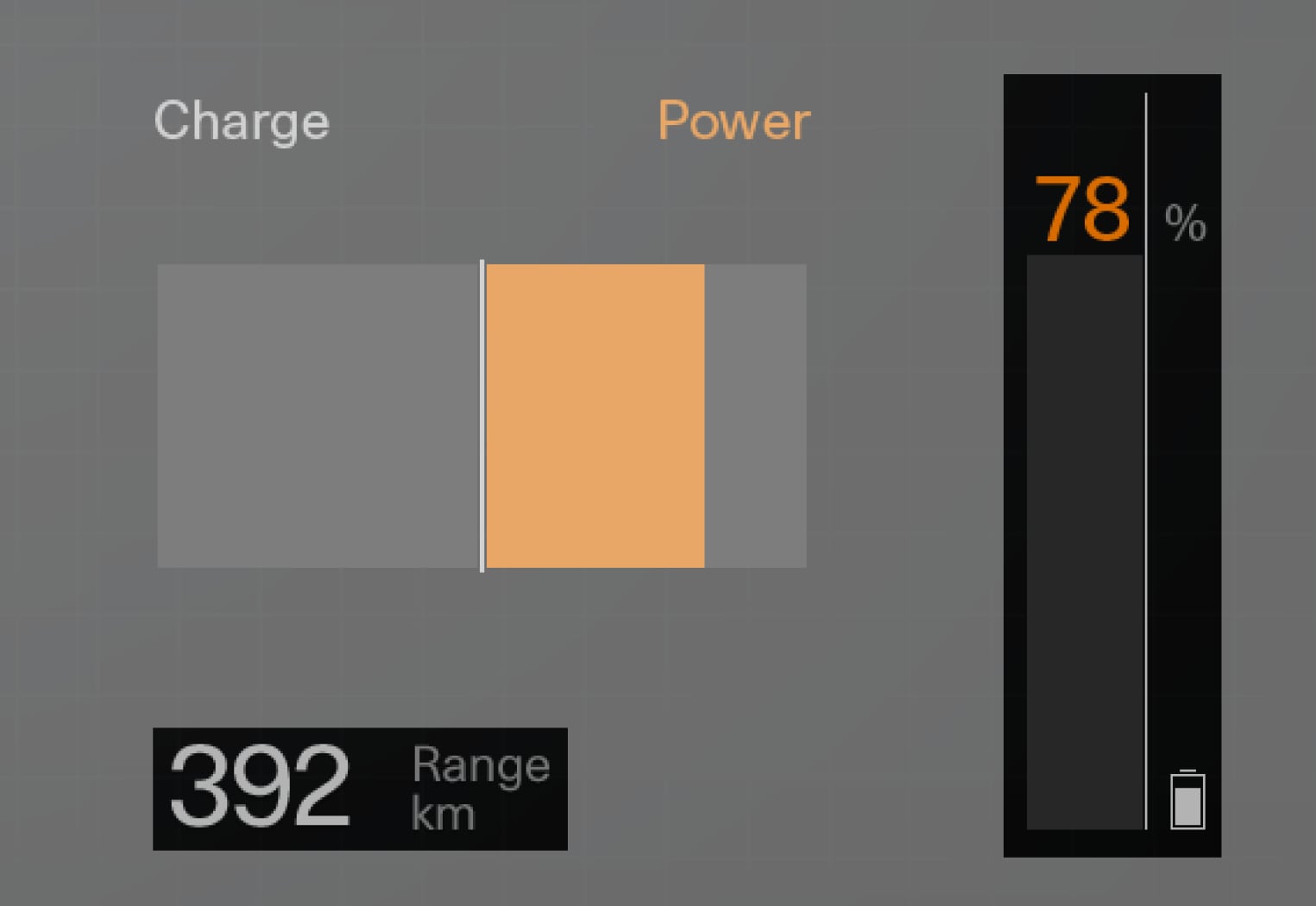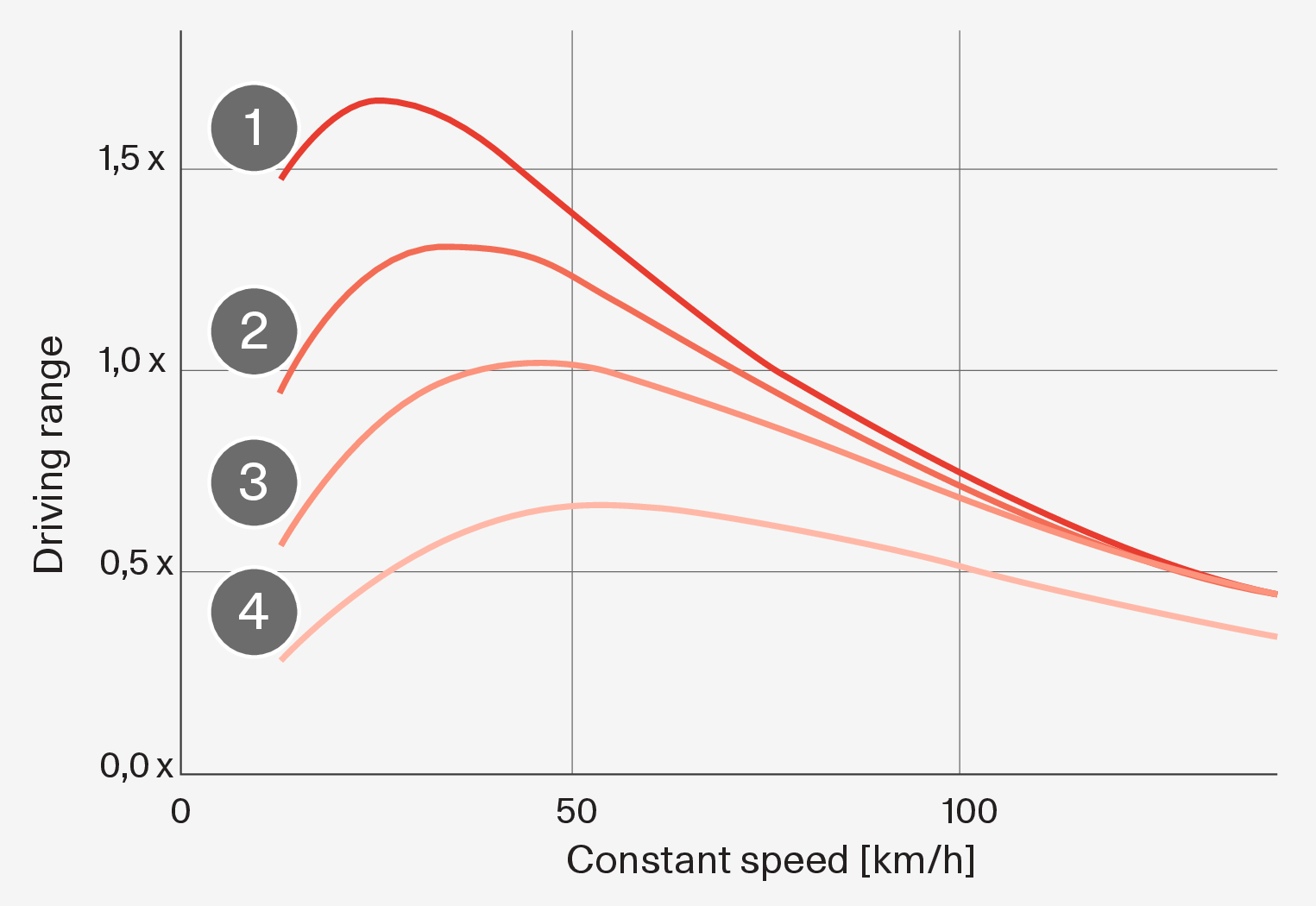Range
The certified value for the distance that can be driven should not be considered an expected driving range. The certified value should primarily be used to compare the results of different vehicles obtained in special test cycles.
Range in instrument panel

The instrument panel shows a realistic value for range based on the certified value.
Short range
As the battery's charge level decreases, the estimated range of the vehicle also decreases. As the range gets shorter, a number of messages and symbols appear on the instrument panel.
| Symbol | Message/meaning |
|---|---|
 | When the vehicle's range drops to 50 km (approx. 31 miles), the battery symbol next to the battery meter will turn orange and the message Low range Do you want to find a charging station? appears in the instrument panel. If a destination is set in the navigation system, the message is not shown. |
 | When the vehicle's range drops to 20 km (approx. 12.5 miles), the battery symbol next to the battery meter will turn red and the message Low range. Do you want to find a charging station? appears in the instrument panel. |
 | When the battery level is low, an orange turtle will appear next to the battery meter in the instrument panel. |
 | The message Reduced power due to low battery charge is shown together with an orange battery symbol. If the turtle was not shown before, it will appear in the instrument panel when this message is shown. |
 | The message Empty battery. Charge battery. is shown together with an empty battery symbol. |
Factors affecting driving range
In addition to historical trip data, there are several other factors that affect range. The longest range is achieved under very favorable conditions when all factors positively influence range.
Examples of factors that affect range:
- speed
- climate control settings
- topography
- preconditioning
- tires and tire pressure
- the current traffic situation
- temperature and weather
- road conditions.
Range in cold temperatures

In cold ambient temperatures, the battery may become cold, which will adversely affect range. If the battery falls to a critically low temperature, this symbol will be shown in the instrument panel. If the vehicle is parked in cold ambient temperatures, the range could be drastically reduced. To avoid extremely reduced range after parking in cold ambient temperatures, the vehicle should be charged while it is parked.
Range based on speed and ambient temperature

 20 °C (68 °F) ambient temperature and passenger compartment climate control off.
20 °C (68 °F) ambient temperature and passenger compartment climate control off. 20 °C (68 °F) ambient temperature and passenger compartment climate control on.
20 °C (68 °F) ambient temperature and passenger compartment climate control on. 35 °C (95 °F) ambient temperature and passenger compartment climate control on.
35 °C (95 °F) ambient temperature and passenger compartment climate control on. -10 °C (14 °F) ambient temperature and passenger compartment climate control on.
-10 °C (14 °F) ambient temperature and passenger compartment climate control on.
The graph shows the approximate ratio between constant speed and range.
The graph shows that a lower speed results in a longer range. The outside temperature also affects range in such a way that very cold or hot ambient temperatures result in a shorter range.
Lines 1 and 2 show the approximate difference in range affected by the climate functions. Deactivated climate control is more favorable for the range.





